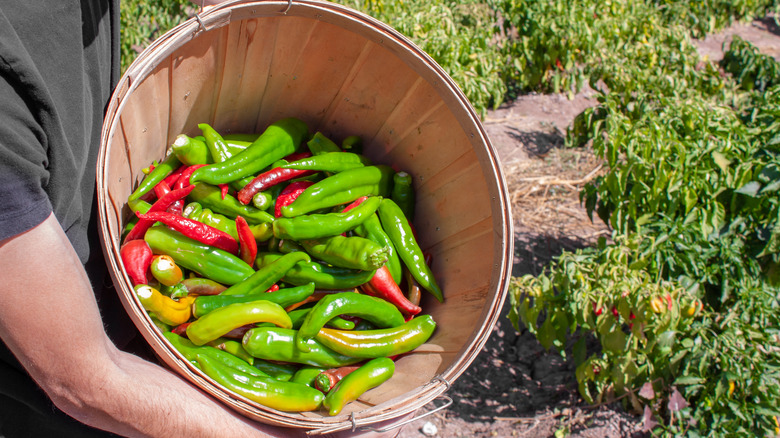For Anthony Bourdain, Beans And Rice Did Not Belong In Chili
Anthony Bourdain believed that chili should be about the meat and the peppers. You won't find any rice or beans in his version of New Mexico-style beef chili. Instead, the dish focuses on developing a rich, authentic flavor using ingredients sourced from one of the many areas chili is believed to have originated. While no beans or rice may seem odd for people who are used to eating those ingredients in chili, remembering Anthony Bourdain's Grandmother's rule about eating food in the manner it's served traditionally may encourage you to try this version.
Anthony Bourdain found his love for the green Hatch chile during his visits to New Mexico. The regional chile pepper typically has a mild heat but a ton of savory flavor and is often considered to be one of the best-tasting chiles. Hatch chile is one of the central ingredients used by Anthony Bourdain in his dish. His recipe is a no-frills version of chili with just peppers, meat, and a few seasonings.
The original chili recipe is believed to have been a trail food meant for the Mexican army, those traveling out west, cowboys, and more. The first ingredients of chili were said to have been dried beef, fat, and dried chili. These ingredients would be combined and rehydrated on the trail with hot water. Anthony Bourdain's recipe isn't the travel-friendly meal of the old days, but the minimal ingredients are guaranteed to bring you back to simpler times.
The importance of the green Hatch chile
You could make the argument that the green Hatch chile is the star of the dish here. The ingredient gives the dish a complex spice and savoriness. This chile is so special because it is native to a small geographical area, making it a sought-after ingredient worldwide. As the name would suggest, the green Hatch chile is native to the Hatch Valley region of New Mexico. Authentic chile pods must come from the Hatch region.
The cultural significance of these peppers to their region is even protected by law. In 2012 legislature passed a law that protected the identity of chiles grown in New Mexico. Only chiles from this region were allowed to advertise themselves as New Mexico chiles, all others needed to include a disclaimer saying they weren't grown in the state.
This produce isn't easy for farmers to grow, and while the environment gives the chiles their much sought-after flavor, it also creates many challenges for farmers. These peppers are sensitive to droughts, parasites, and even excessive heat. This makes the final product all that more valuable.

